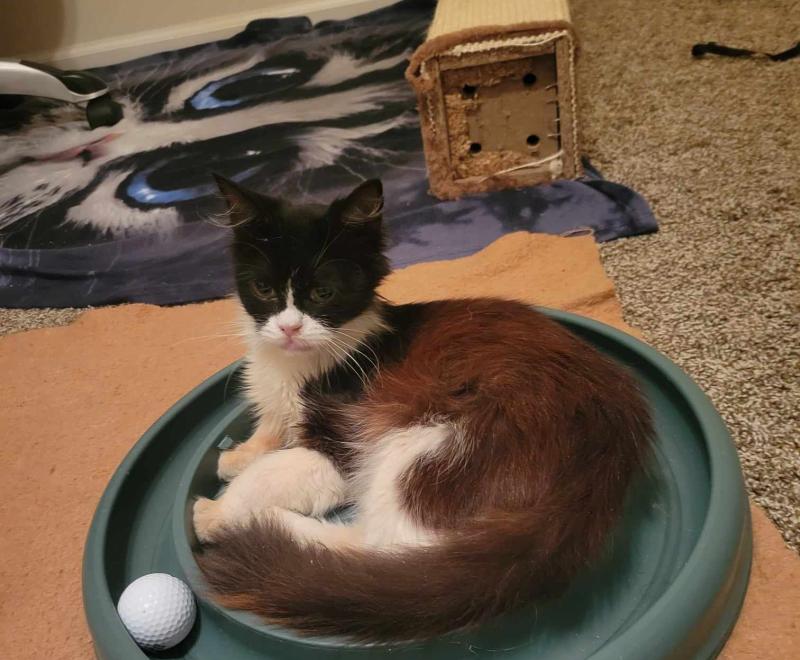Faces of No-Kill: Cat doesn't let illness dull her shine
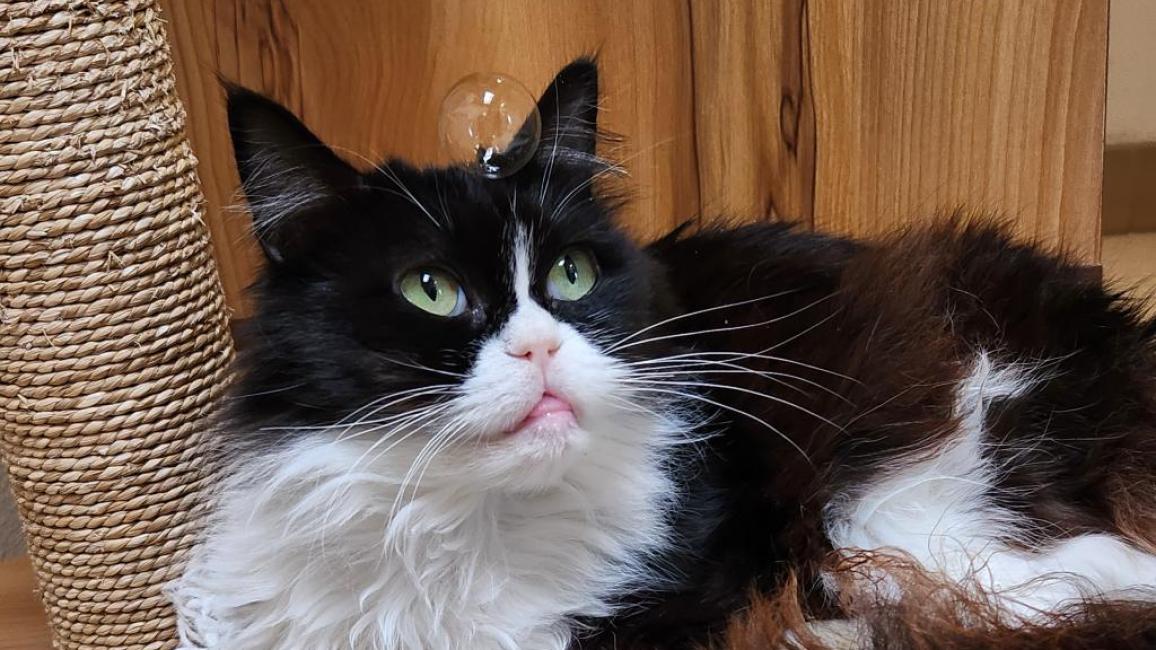
Sunlight filters through a window, casting a golden glow on a petite black-and-white kitty with a button nose and tiny pink tongue hanging out, commonly known as a “blep.” Jessie is the queen of bleps — and the bathroom at Casa de Calmar, one of the buildings at Best Friends Animal Sanctuary’s Cat World.
This story is a part of our Faces of No-Kill series, highlighting the journey of pets who lost their place to call home. These pets are thriving today thanks to animal shelters that said yes to lifesaving and found a way to save them. Best Friends’ goal is for every shelter and every community to reach no-kill in 2025, and this story shows why that’s so important.
Calmar is a home-between-homes to cats like Jessie who have tested positive for feline leukemia virus (FeLV), a virus that is contagious to cats, weakens their immune systems, and has no cure.
“She’s adopted the bathroom as her very own studio apartment,” says Melissa August, one of Jessie’s caregivers at the Sanctuary. “She was quarantined in the bathroom for a week after dental surgery. When it was time for her to come out and we opened the door, she said nope, forget it.”
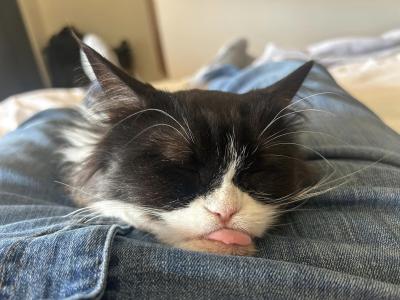
Jessie’s journey
Jessie’s journey to the Sanctuary started in Louisiana, where she lived outdoors as a community cat. These free-roaming felines are often valued neighborhood residents cared for by community members like Beverly Hanson and Maren Kieman.
A dedicated group of volunteers, including Beverly and Maren, was working to humanely trap, spay/neuter, and vaccinate community cats in the area before returning them to their outdoor homes to live happy, healthy lives without producing any more kittens. However, when Beverly and Maren found Jessie, they knew she needed help — and fast. While most community cats thrive outdoors, sometimes they need a little help. Jessie was one such case.
“When we took her to the vet, we thought she had been injured because she walked so stiffly and slowly; it was almost like she couldn't bend her legs at all,” says Maren. “She couldn't even step into a litter box. Turns out she had no broken bones or old injuries but was extremely malnourished. We put her in foster care with me to improve her condition.”
Maren’s home provided the space and care Jessie needed to regain some strength. And this tiny queen settled in right away, claiming a round cardboard cat scratcher as her throne — a precursor to her bathroom domination at Cat World.
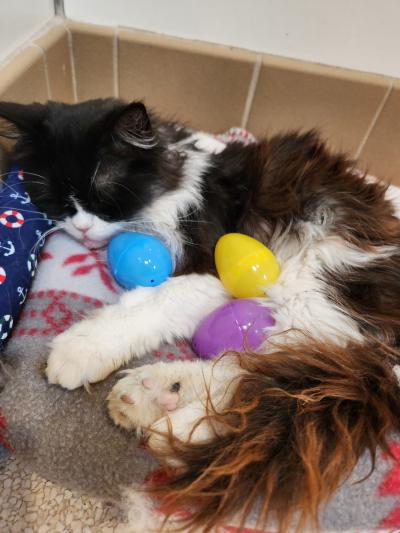
Road trip time
Once Jessie was feeling a little better, it was time for spay surgery. That’s when Maren and Beverly learned Jessie tested positive for FeLV. Because FeLV weakens cats’ immune systems, they are more susceptible to infections like dental disease, which could explain Jessie’s malnourishment. Additionally, Jessie couldn’t be released back outside due to FeLV’s contagious nature to other cats. That meant they needed to find a rescue group that could care for cats with FeLV.
“Beverly heard from a friend that I’d brought a few cats with FeLV to the Sanctuary and have some connections,” says Barbara Bornemann, a volunteer who transported Jessie to the Sanctuary. “So she contacted me, and we got it done!”
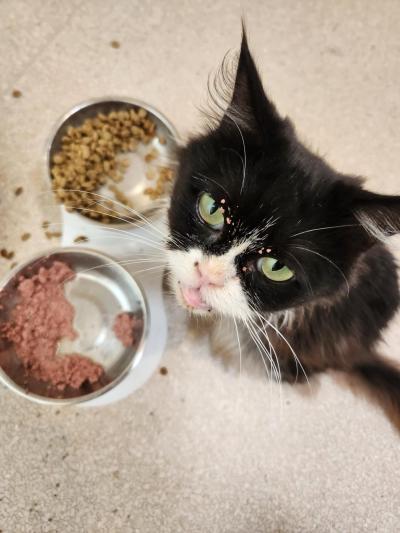
Surviving and thriving
In addition to FeLV, Best Friends Animal Clinic veterinarians diagnosed Jessie with a mild case of cerebellar hypoplasia shortly after her arrival at the Sanctuary. Cerebellar hypoplasia is a condition that causes cats to have neurological difficulties and problems with motor skills. She’s just a little wobbly as a result, which makes her even more endearing.
[Wobbly kitten gets by with help from his friends]
Jessie also developed feline infectious peritonitis (FIP) shortly after her arrival. FIP is a disease in cats caused by a coronavirus that, until recently, had no effective treatment available to veterinarians in the United States and was 100% fatal. But Jessie’s infection was caught early due to the diligence of her caregivers. And thanks to recent clinical trials, treatment was an option.
[Faces of No-Kill: Cat thrives after FIP treatment]
While Jessie was undergoing FIP treatment, her caregivers at Cat World worked hard to make her life as comfortable as possible, showering her with treats, extra cuddles, and toasty laps and making sure her powder-room sanctuary was fit for a queen.
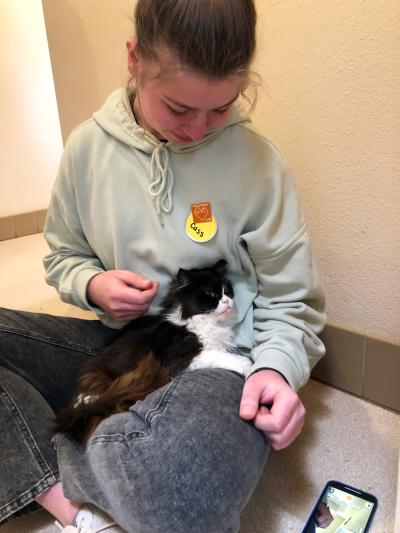
A beloved 'Muppet'
Nowadays, Jessie basks in the adoration of her caregivers, volunteers, and numerous social media followers. Her sweet nature seamlessly led her from community cat life to one where she is surrounded by people — and loving it. She's living a good life after overcoming so many challenges to become the beloved queen she is today.
“Jessie is one of our most treasured kitties and an absolute favorite amongst staff, volunteers, and tours,” says Melissa. “I call her my little Muppet as she has the most adorable underbite. She is spoiled rotten around here and doing fantastic!”
Jessie’s sunny personality and indomitable spirit in the face of so many challenges continue to win the hearts of all who meet her. Now she’s ready for her next adventure: a home — and bathroom — of her own.
Let's make every shelter and every community no-kill in 2025
Our goal at Best Friends is to support all animal shelters in the U.S. in reaching no-kill in 2025. No-kill means saving every dog and cat in a shelter who can be saved, accounting for community safety and good quality of life for pets.
Shelter staff can’t do it alone. Saving animals in shelters is everyone’s responsibility, and it takes support and participation from the community. No-kill is possible when we work together thoughtfully, honestly, and collaboratively.
